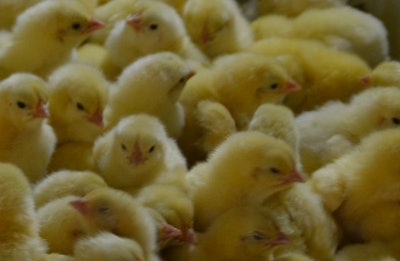
Microbial and environmental risk assessments should form part of any hatchery’s quality control (QC) program.
Speaking at an International Production & Processing Expo (IPPE) Marketplace TechTalk, Joshua Deines, senior manager of Technical Field Services with animal health company Zoetis, gave an extensive overview of assessing microbial and environmental risk in the hatchery.
He explained that, if bacterial and mold challenges are to be kept to a minimum, hatchery mangers need to know how dirty the hatchery is. They need to know what is the current microbial load and challenge, and what is hatchery dirty with. Is there a specific area that is not being well cleaned, or is the whole hatchery affected?
Once this has been established, the source of contamination will need to be established so that its route of entry can be eliminated.
Visual inspection
The first and easiest step is visual inspection. For example, eggs may be obviously dirty. They may have been dirty on entering the hatchery, or it could be the setter that is dirty, contaminating the eggs.
Are areas being inspected and cleaned and maintained properly? A visual inspection may reveal this allowing regular maintenance to be added to the QC program.
Bacteria and mold
Microbial risk assessment can reveal what visual inspections cannot, but before microbial assessments can be made a number of questions need to first be answered.
Will an assessment be specific or general? From where should samples be taken and with what frequency? How will the data be used to spot trends, or to make better management decisions or improve processes?
Once these parameters have been established materials can be sourced and sampling conducted.
Materials will include Saboraud Dextrose Agar plates, Trypticase-Soy Agar plates, sterile swabs, a timer, masking tape, a pencil and some sort of data entry system.
There are three main ways to take samples.
Air plates are useful to identify environmental challenges in circulating air, with 10 minutes being the standard time for plate exposure. Once the plate has been sealed, it should be incubated and the results examined.
Swabbing surfaces with sterile swabs is the most common testing technique. For example, in the laboratory, you may want to swab the counter to ensure that it is clean and sterile. Swabs should be wiped on the counter and then on the plate in a zig-zag pattern.
Egg touch cultures will identify bacteria on the eggshell surface, and is often conducted prior to transfer. The plate should be divided into four to allow for four individual egg samples. Generally, the blunt rounded end of the egg should be sampled, and care taken not touch this area of the egg prior to sampling.
Consistency key
By systematically breaking down locations within the hatchery for sampling, it becomes easier to determine whether an issue is isolated or more generalized, Deines noted.
When reading incubated samples, processes need to be in place and consistency is key. Plate colony counts can be given a rating to aid in identifying trends. Results can be relative or given weighted equations.
The sum of plate scores, or weighted totals, should be considered, with emphasis given to areas of the hatchery where challenges might be the most harmful.
Care must be taken not to introduce bacteria into those areas being sampled, and sampling needs to start in the cleanest part of the hatchery at the cleanest time, to help evaluate how good the sanitation program may be.
Consistency is key. The same person should be reading plates, everyone should following the same program at specified intervals and notes should be taken to aid in troubleshooting.
Read more from IPPE Marketplace
















